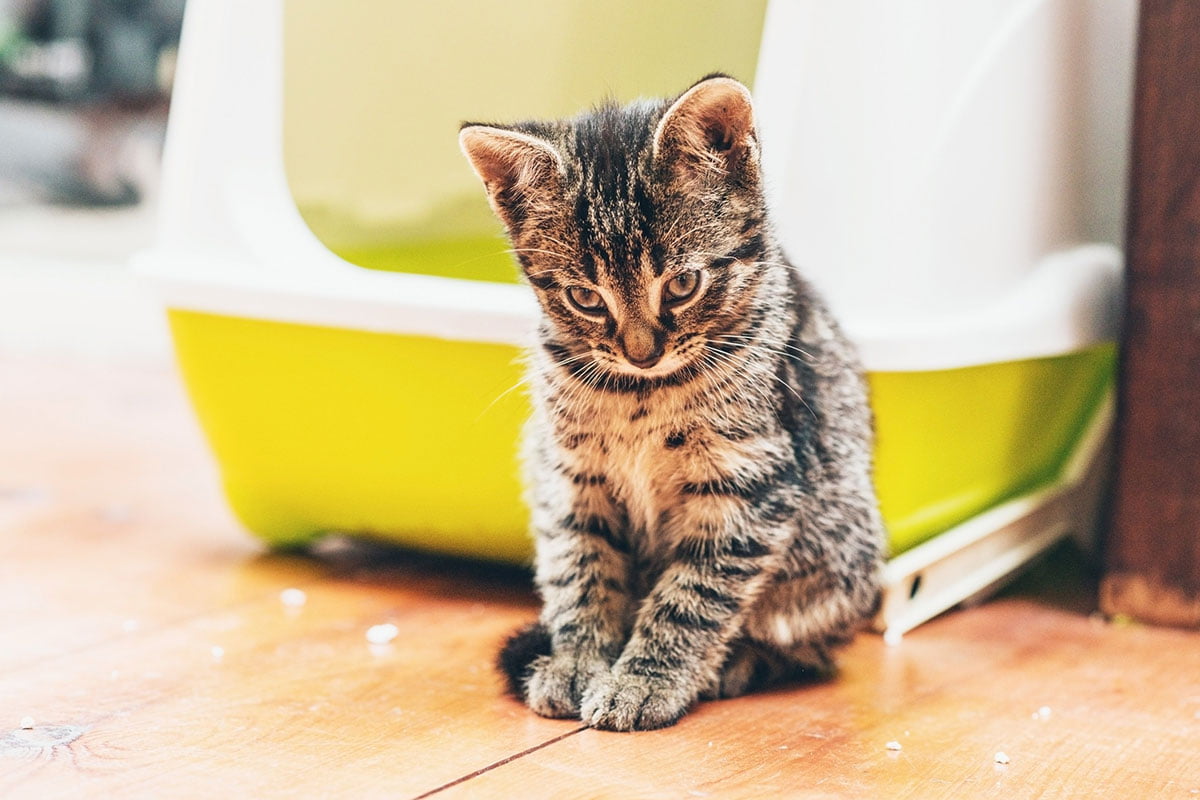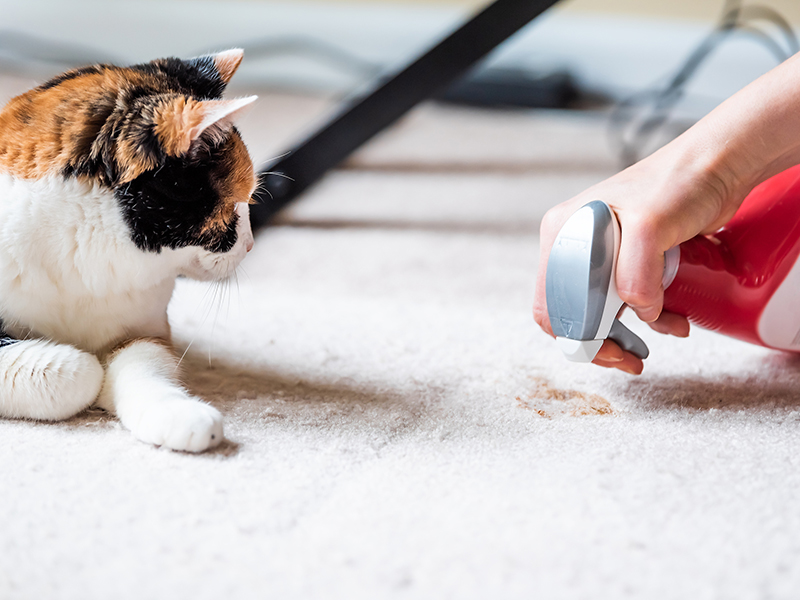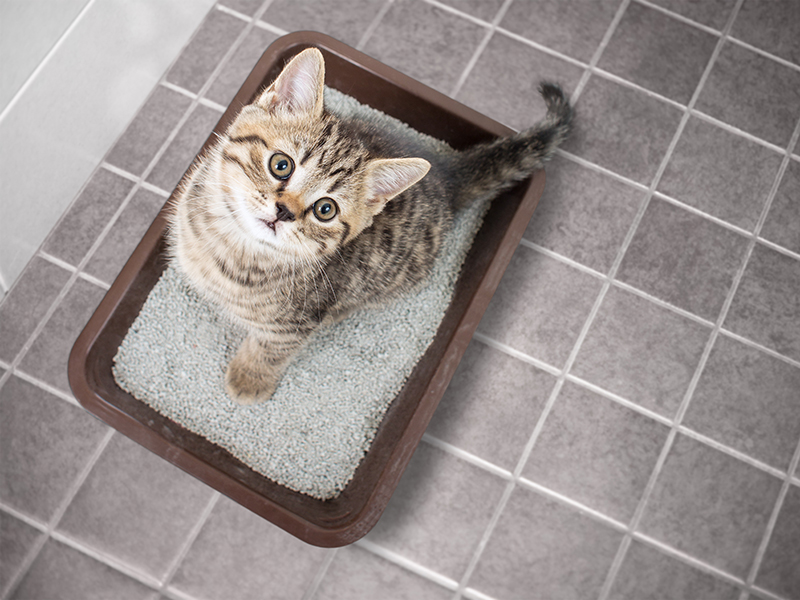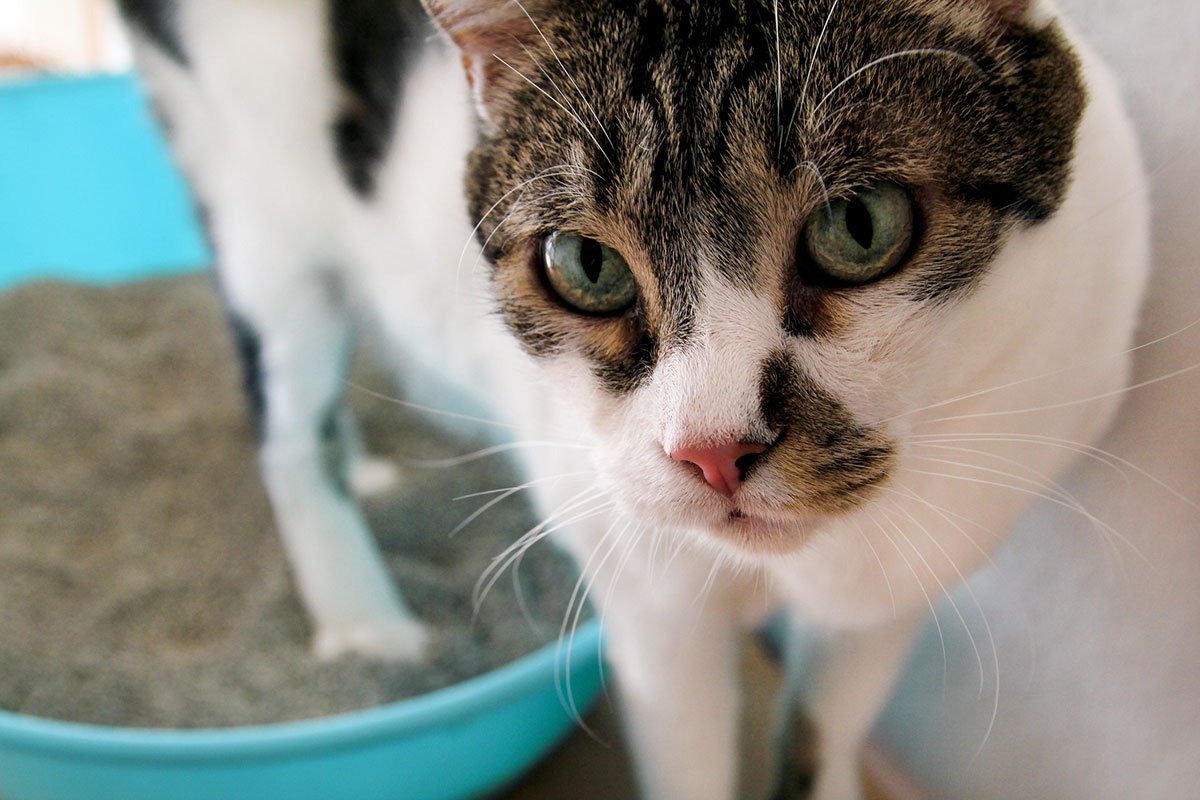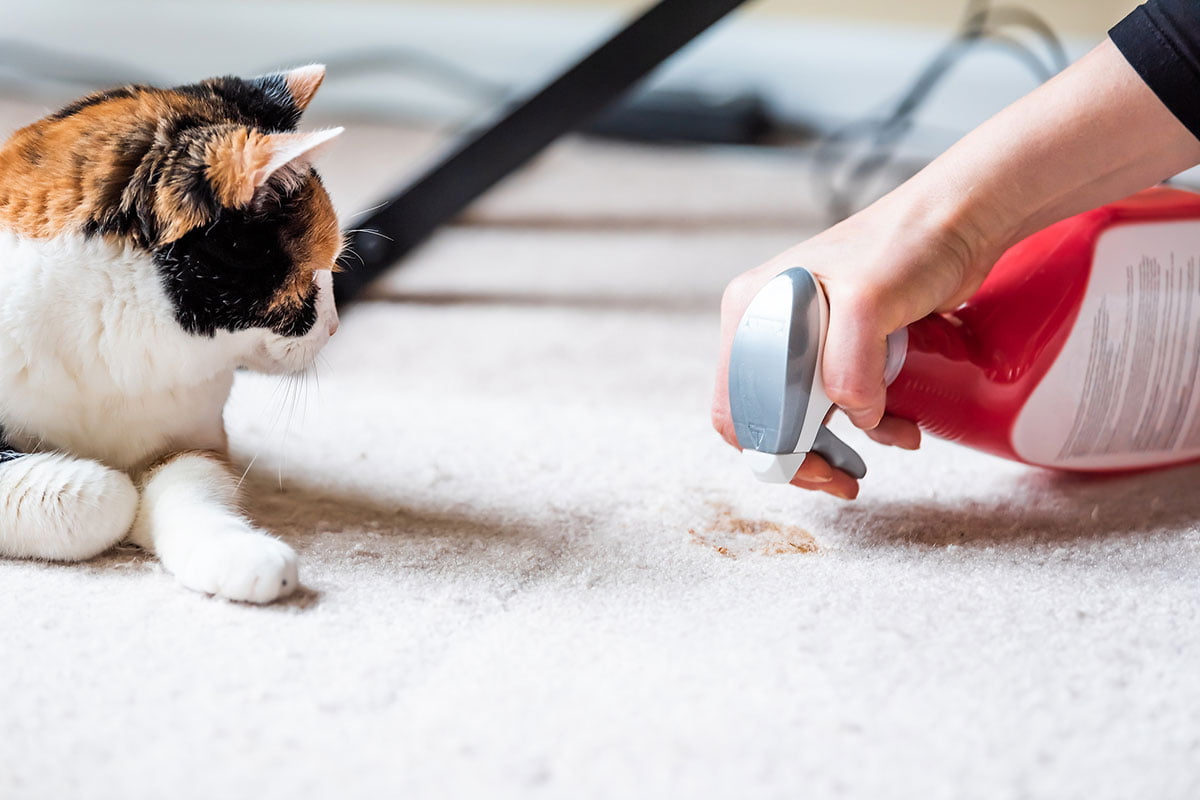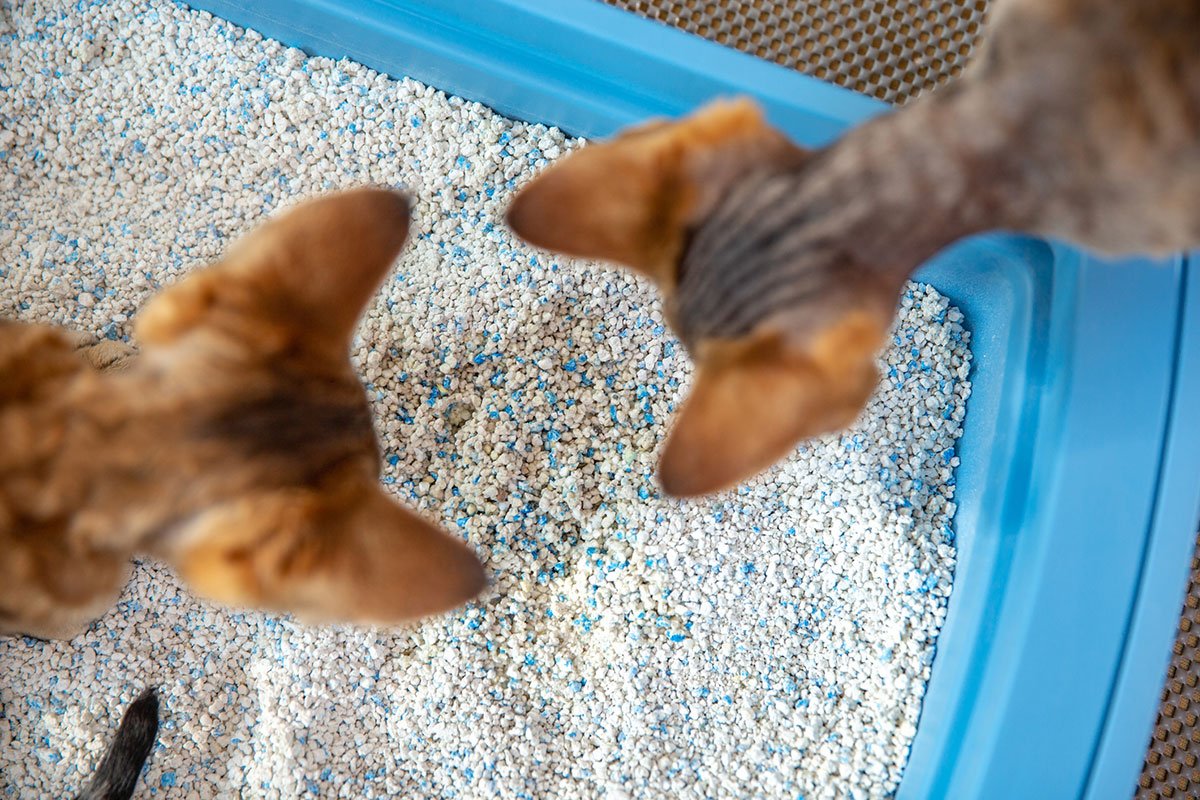Being a cat parent means occasionally having to clean up litter that gets tracked outside the litter box. This is simply a fact of life with cats. But if your cat is the type to really bury her waste, or if you don’t have the right litter box set up for your cat, then you can be cleaning up what seems like an endless supply of litter all over the house.
Litter tracking occurs when little bits of your cat’s litter stick to her paws and fur after using the litter box, which she can then spread by moving around the house. While nothing will completely eliminate all litter tracking (don’t believe claims otherwise), you shouldn’t need to spend inordinate amounts of time cleaning up after your cat. Additionally, changing your cat’s litter frequently will prevent smells from tracking with the litter (with a good odor control cat litter also helping if this is an issue). In this article, we outline a few simple options that can really decrease litter tracking in your home.
Type of Litter
Different types of litter won’t all stick to your cat and be spread around to the same extent. Typically, lighter cat litters tend to be more easily spread than their heavier counterparts. It is simply easier for small grains of light, clay litters to get trapped in your cat’s paws compared to larger paper pellets and silica gel or crystals.
Larger, heavier clumping cat litter is also often easier to clean up than small, dusty grains of clay litter, which can get stuck in carpet and other nooks and crannies around the house.
However, cats can be picky about what sort of litter they like, and their preferences may not match your desire to limit litter tracking.
If you do make a switch from clay to a more dense material, make sure to gradually mix more of the new litter into the old one, instead of completely switching all at once. This will show your cat that the new litter has the same purpose as the old, and allow them to get acclimated to the change at their own pace. Otherwise, you may find your cat pooping outside of the litter box, as it does not associate the litter with the bathroom.

The Litter Box
In addition to the litter itself, your choice of litter box can significantly impact how much kitty litter you find around your house.
Large boxes with hoods and a door flap, or high walls can help minimize scattering that results from your cat burying or rearranging her litter box. Top-entry boxes are also designed to limit tracking by having litter attached to paws fall off as a cat climbs in and out. However, these may not be appropriate for kittens who are litter training or older cats who might find it hard to climb in and out.
Another option are litter boxes with built in track pads that trap litter from the paws as your cat exits the box.
Keep in mind that how much you fill the litter box can also influence tracking. Instead of filling the box close to the top, which increases the chance that you’ll find litter outside the box, put only 2 or 3 inches of litter in the box.
Keep the litter box clean by scooping out any waste consistently. Cats always prefer a clean environment to do their business, and if the litter box is dirty it may cause them to dig excessively, thereby kicking litter outside the box, to find a clean spot.
The Environment Around the Box
How you set up the environment that surrounds the litter box can also help your efforts to minimize the spread of litter.
A litter mat placed next to or under your cat’s litter box can help trap any litter that is attached to your cat as they exit the box. Be sure to select a mat that is large enough so your cat steps on it every time they use their box. You can also sprinkle the trapped litter back into the box as required.
Where you place your litter box can also matter, especially if you want to avoid litter tracking in particular areas. If you want to avoid feeling sandy litter on your bed sheets, for example, place your cat’s litter box far away from your bedroom.
Enclosing the litter box can also help. A simple solution is to put the litter box inside a larger box or larger receptacle so that the second box will catch any litter that makes it over the edge. If you have a spare bathroom, then you can place the litter box in the bathtub, which will largely limit tracking to the inside of the tub.
The most complex, but also likely the most effective, form of enclosure is litter box furniture. This involves a hollow piece of furniture like a bench, that houses both the litter box and a plastic grid (which traps litter), that your cat must walk on in order to enter and exit the litter box. As a result, any litter tracking is typically contained inside the furniture,
Remember to clean up around your cat’s litter box frequently, so that any litter surrounding the box does not get carried away to other places in your home. Having a vacuum near the box is often easiest and most effective.
Remember to Groom Between the Toes
Trimming the hair between your cat’s toes can also help decrease the spread of cat litter, especially for long haired cats. Litter can easily get stuck in long hairs between your cat’s pads, so using blunt tipped scissors to keep the hairs from growing excessively long is a good option, as long as your cat is not fussy and remains calm throughout the grooming process.
Keeping Litter In the Box
While no single solution is perfect for reducing litter tracking for all cats, choosing the best non-tracking cat litter is one of the most important steps that you can take to help make living with your cat, and their bathroom habits, easier on your daily cleaning routine.

